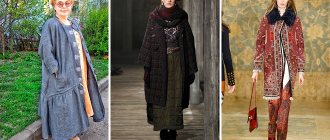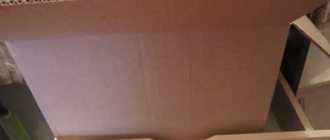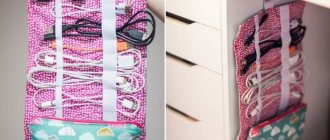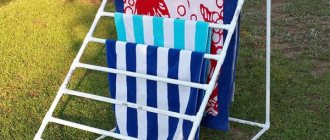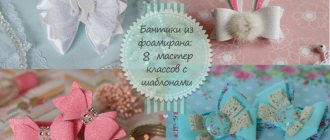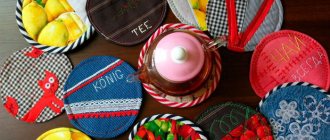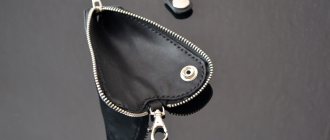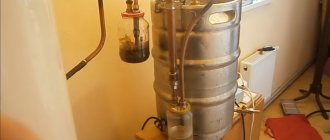The textile industry has stepped far forward, and now housewives no longer have an urgent need to sew things on their own. This makes life much easier, but many craftswomen sometimes want to please themselves and loved ones with a set of sheets made of beautiful fabric, not factory-made, but hand-made. However, they cannot dare to do this. Often it is dissatisfaction with their own skills that prevents them from taking control of the matter, and then people turn to the studio. But today we will try to prove that sewing bed linen on your own is a feasible task, especially if you know how to make the necessary measurements, how much fabric is needed for bed linen, and what sequence of actions must be followed.
Sewing a bedding set from your favorite fabric is easy if you follow the instructions
Fabric calculation
Fabric consumption for a bedding set
Before sewing bed linen with your own hands, it is first of all important to carry out a number of manipulations: the most important thing is to take accurate measurements. They will help you correctly calculate the fabric for individual tailoring.
If you want to make a high-quality set of bed linen, approach the process with all care. Don’t skimp on the quality, and most importantly, the quantity of fabric (it’s better to have an extra scrap left than to collect pieces with scraps).
Layout for cutting a set on fabric 220 cm wide
In stores you often find ready-made sets of canvas with already calculated length and width (for standard sets this is approximately 2 - 2.5 meters). Consider the likelihood of shrinkage (especially after machine washing - about 5%), as well as the features individual to each individual material.
Table for calculating fabric yardage for bedding sets
Why sew bed linen
Many women will be surprised by the desire of seamstresses to spend time sewing kits when you can buy ready-made ones in stores. Indeed, you don’t have to bother, just go to the store and buy. But real dressmakers want to do everything with their own hands.
Often the set does not fit in size, it only has 2 pillowcases, but four are required (pillowcases are usually changed more often than the duvet cover). At home, it’s easier to make as many items as you need, and you can choose the material that suits your mood.
You can also sew several sets from suitable fabrics, and then change them depending on the situation or time of year. Sewing a kit for beginning seamstresses is the best practical training.
Despite the wide selection of these things, if you still decide to make an original work, then choose the appropriate material.
How to choose fabric? The best choice is from natural fibers:
- Good quality linen. A little rough, but durable and environmentally friendly.
- Silk. Gentle, pleasant to the body. But it is too expensive and requires special care.
- Cotton. Easy to care for, practical, hygroscopic.
- Bamboo. It is soft to the touch and clings pleasantly to the body, but requires washing at low speeds or by hand.
- Tencel. Pleasant on the body, soft, creates comfort during sleep, but too expensive.
- Satin, poplin, cambric are very pleasant to the body and are inexpensive.
Individual items can be made from flannel or terry fabric - there is a wide choice. When choosing a material, look at the dimensions. Buy cuts 220-240 cm wide, just enough for an adult bed.
Calculation of fabric for children's bedding
Let us illustrate more clearly with an example of sewing children's bedding. Let's take a mattress 90 cm wide and a pillow measuring 60 cm by 60 cm.
We calculate the canvas.
- 1 sheet - you will need approximately 120cm x 2. If you want to tuck the edges under the mattress, add a little more padding around the edges. The pass is calculated based on the height of the mattress.
- Duvet cover - raw materials are calculated based on the size of the blanket under which it is actually sewn. It turns out: for a 1.2 m blanket you will need - two widths + 10 cm allowance + 10 cm for shrinkage + 10 cm so that the blanket is free = 2 m 70 cm + 10 cm seams.
- 2 pillowcases – their size remains the same as the size of the pillows + 10 cm, leave seams sewn and another + 10 for shrinkage. Cut the pillowcase along the material to make the process more economical.
By summing up all the necessary measurements, we will get the exact amount of fabric that will be needed in the process of sewing a bedroom set. It’s better to protect yourself - buy with a reserve in order to avoid troubles later.
Elements of children's bedding - cut to a fabric width of 150 cm
Standard Size Chart
To start sewing bed linen, you need to know exactly what type of set the items are being made for. Therefore, the size of each piece of bedding is initially determined. The easiest way is to use a standard table:
Size table
If we take a crib as a basis, then the parameters of the future set should be determined individually. To do this, you need to take measurements from the mattress, pillow and blanket, since there are no standards for sizes and shapes.
How to calculate the amount of fabric
In order not to make a mistake with the amount of fabric, it is worth making the most accurate calculations. This is especially true if sewing bed linen is a small home business. First of all, you need to decide on the parameters of all bedding parts. Additionally, it is worth considering the shape of the mattress, pillow and blanket. The width of the fabric matters. If it is 1.5 m, then all products will be sewn. With a width of 2.2 or 2.4 m, all parts of the products will be solid.
The width of each seam and hem should be 1.5 cm, and overlock is excluded. It is also better to exclude linen seams - it is difficult, time-consuming, and they come out very thick. The percentage of shrinkage can be calculated: you need to take a piece of fabric 1 m by 1 m and wash it in the same way as we will wash laundry in the future; After washing, drying and ironing, see how much the cut has shrunk. The percentage of shrinkage is calculated by proportion:
- previous length - 100%;
- new length - X%;
- Shrinkage = 100 - (new length * 100 / old length).
You might be interested in this: Beautiful patterns for sewing trousers for boys
For example, 1 m of textile was taken, after washing it turned out to be 90 cm, shrinkage = 100 - (90*100/100) = 10%. This calculation scheme is mandatory when using alternative types of fabrics for sewing. To ensure that the pattern is correct and without any shortage/excess of fabric, you can use the following table:
How much fabric is needed for each type of bedding set
It is necessary to take into account all the features of the chosen fabric and shape. It is advisable to initially create a sketch.
How much fabric do you need to sew a double bedding set?
To sew a standard double set, you will need:
- for duvet cover – 200/200; 180/210; 180/210;
- sheets – 175/210; 200/220; 210/230;
- sewing pillowcases – 50/50; 60/60; 50/70.
Let's calculate the amount of fabric needed.
To sew a duvet cover measuring 180 by 180, fold a piece of fabric in half + 5 cm allowance = 365 cm.
Cutting sheet 200 cm + 5 = 205 cm.
For pillowcases – 125 cm.
In total, you need 6m 95 cm to make the entire set.
Layout of the cut with seam allowances and fabric shrinkage for a double set
Sewing a duvet cover
The simplest duvet cover with a hole in the side can be easily sewn by every craftswoman. To prevent the fabric from shrinking after the first wash, it should be ironed with a steamer, and it is better to make allowances of 4-5 centimeters on each side.
In a word, if the blanket is 140x200, then with a fabric width of 220 you need to take 290 cm. When sewing a product with a side slit, the cut is made from the side of the edge.
To cut this piece, lay the fabric on the floor, marking 2 rectangles based on the size of the blanket. Don't forget to add seam allowances.
Process each part separately, making a double hem on each side of 0.5 cm. After this, the hem is ironed and sewn on a machine. Finished parts must be the same size.
Place the pieces facing each other and stitch, not forgetting to make markings on the side for the hole for squeezing the blanket through. To ensure that the stitches do not diverge, it is necessary to make bartacks.
Since both halves are already stitched, there is no need to further process the hole. The product remains to be turned out, then the blanket is inserted.
There is another way to sew this item:
- Fold two pieces of fabric back to back. If the cut is large, then it should be folded in half.
- Make markings along the length and width of the blanket, adding seam allowances. And mark the hole for the blanket on the side.
- Sew around the perimeter of the product, except for the hole.
- Turn the resulting workpiece inside out. Straighten all the lines with your hands.
- Then lay another one, close to the first seam. Thanks to the second seam, we will hide the raw edge, that is, we will do without an overlocker. Example: the first seam was made from the edge at a distance of 1 cm, then the second seam from the edge will be at a distance of 1.2–1.3 cm.
- Finish the hole for inserting the blanket. Turn the product inside out and iron it.
How much fabric do you need for a Euro bedding set?
For a luxury set you will need approximately:
- duvet cover - 220/240; 215/225; 200/220;
- sheet – 220 x 240; 220 x 250; 215 x 240;
- pillowcases – 50 x 50; 50 x 70; 60 x 60.
We calculate the amount of production fabric.
Duvet cover – bend the fabric so that both pieces are 240 + 5 cm each.
Sheet – 245.
Pillowcases – 115.
In total, it turns out that to make a euro headset it will cost 8 m 45 cm of good quality fabric.
Layout of the cut with seam allowances and fabric shrinkage for the euro set
Sewing a pillowcase with a flap
A wrap pillowcase is easy to cut and even easier to sew. Master class on sewing a 50/70 cm product from cotton fabric.
To work you will need:
- Fabric - 169/53 cm
- Threads.
- Clips or pins.
- Sewing machine.
- Scissors.
- Centimeter, pencil.
- Cut a simple pillowcase
According to the plan, the smell should be 25-30 cm so that the pillows do not crawl out of the cover. Place the material face up.
For convenience, let's take the following formulas:
- With a wrap: add 25-30 cm to the length of the pattern and 1.5 cm for the hem. For a product 50x70, fabric will need: 50x2 (sides) + 25 (valve) + 5 (allowances) = 130 cm. For a pillow size 70x70: 70x2 + 25 + 5 (allowances) = 170 cm.
- With a zipper: on each side, add 5 cm to the length of the pattern for sewing in a zipper.
- On buttons: add 4 cm to each length for the placket, taking into account the double hem for sewing on buttons and loops.
To prevent the fabric from “shrinking” when washing the finished product, it is recommended to wash and iron any material before cutting.
The modern standard used for sewing bedding is 220 cm. From a cut equal to 170 cm, you can make 3 pillowcases measuring 70x70, with seam allowances.
How to cut out a product: divide the fabric into 3 equal parts, cut with scissors. For rectangular covers, a cut 220 cm wide can be divided into 4 cuts.
Several recommendations for choosing material
Bed fabric with a cherry blossom pattern
Sewing a sleeping set with your own hands gives you the opportunity to choose any fabric you want (even the cheapest - as long as you like it). However, it is important to remember that these pillowcases and sheets are for the purpose of sleeping on them; imagine what a dubious pleasure it is to “sleep on kitchen towels.”
Basic requirements for fabric.
- Softness, pleasantness, comfort - it simply needs to be suitable for sleep, as well as accompany its normal course.
- Natural - synthetic - the worst thing you can choose for sewing bed linen. Give preference to breathable, natural materials (silk, calico, cotton) that will retain heat in winter and provide normal ventilation in summer.
Natural fabric for a bedding set is the key to a sound, healthy sleep. They will not harm children's health; easy to handle; affordable.
Curtains with embroidery
Curtains and tulle with embroidery will decorate any room in the house. Light curtains with floral patterns have been popular for a long time. They come in gold, white, cream and multi-colored. If the window is large, then tulle with a large pattern is suitable for it, for small ones - with a small ornament.
For classic interiors, curtains made from natural materials, decorated with colored embroidery, are suitable.
Thick curtains made of natural material with bright embroidery will look impressive. For an Indian interior, curtains embroidered with gold are suitable, for rooms in a rustic style - linen curtains with small crosses, for an apartment in the Provence style - curtains with lemons, lavender, and small roses stitched on them.
Embroidery in the kitchen interior
To create a special mood, you can use old embroidery in a modern interior. Such “riches” are sometimes stored in grandmothers’ chests. There you can find beautiful old curtains, which, after cleaning, will become a magnificent interior decoration.
New Year's embroidery for a festive interior
Threads for bed linen
Modern manufacturers offer a large selection of durable, reliable and good threads
They are also recommended to be given due attention. Correctly selected thread strength, thickness, density, and their color matching to the selected material will ensure the quality of your finished work.
The market offers a wide range of different threads: from ordinary cotton to silk or even the finest gold. For sewing, the following will be the best.
- Polyester threads "Durafix".
DURAFIX sewing threads made in Turkey - Professional threads made of high-strength polystrong.
- Capitone threads - suitable for all occasions; weightless but durable, they perfectly hold even dense samples together.
Threads are often marked with the following marks: LH - linen cotton; LL – flax lavsan. The numerical designation indicates the thickness of the thread.
Threads made from synthetic materials (for example, 100% polyester) have much higher parameters than natural products. They are much stronger, less likely to delaminate, and the tension coefficient is also much higher. A high-quality thread is easy to recognize by eye: its structure is even and smooth. The stitching with these threads is neat and smooth.
How to embroider letters with a cross on fabric
Cross stitching letters is a common method. Using pull-out or water-soluble canvas allows you to get perfectly even work, even when you need to embroider letters on fabric by hand for the first time.
patterns for embroidering the Cyrillic and Latin alphabet, which allows the needlewoman to choose the best option for herself. You can use fonts of any complexity - with curls, slopes - it is much easier to embroider them with a cross than with satin stitch. You can find a selection of schemes to your liking by following the link.
If you have skills in working with programs for creating circuits, you can make your own unique work.
Embroider using the counted cross stitch technique directly on the fabric, if it is of uniform weave, or using water-soluble/pullable canvas. If canvas is used, it is basted so that it does not run on the fabric.
If the canvas is water-soluble, to get rid of it, place the item in warm water for 10-15 minutes . If it is pulled through, it is pulled out from under the embroidery thread by thread.
The letters are embroidered according to the pattern, making sure that the direction of all the top and bottom stitches is the same.
Embroidering initials on clothes and personal items appeared a long time ago and has not lost its relevance to this day. Intricately embroidered letters emphasize the status and excellent taste of a person. On children's things, carefully executed embroidery will look appropriate and show the mother's skill, at the same time to confuse things .
Patterns for sewing sleeping linen with your own hands
We cut the sheet to cover the entire width of the fabric, and calculate the length using the formula: length of the mattress + 20 cm
We make the length of the duvet cover to cover the entire width of the fabric, and calculate the width of the duvet cover using the formula: the width of your blanket + 6 cm (shrinkage allowance) + 1.5 cm (seam allowance) x 2
Cutting is the second, but not the most important, stage, the stage after taking measurements and establishing the required size of the canvas. Here you are required to apply maximum care, since it is very important not to cut off too much, otherwise it will no longer be possible to correct it. Next, we will give some tips to optimize the sewing process as much as possible and avoid damage to expensive brocade through your own efforts.
A piece of fabric for pillowcases 50 by 70 cm = (50 cm x 2 + 25 cm (at the hem) + 5 cm (seam allowances))
Piece for pillowcases 70 by 70 cm = (70 cm (side) x 2 + 25 cm (at the hem) + 5 cm (seam allowances))
Sewing sheets with elastic
Recently, all seamstresses have learned to sew sheets with elastic. They are convenient because they do not slip, do not become folded, and are easy to put on the mattress. Making such a product yourself is not at all difficult. The main thing is to make the pattern correctly.
The figure shows what measurements need to be taken when measuring the mattress:
- First you need to measure the width, length, then thickness of the mattress.
- Next, for a good fit, add 1.5 cm to each measurement.
- You should also add 10-20 cm on each side for those parts of the sheet that will go under the bottom of the mattress.
- The main thing in this cutting is to correctly cut the corners of the canvas.
The length of the side of the square should be 10 cm + the thickness of the mattress. The whole canvas without squares is equal to the size of the mattress + 1.5 cm on each side, which are added for fit.
The next step is stitching the corners. Align the sides of the squares by folding the fabric with right sides facing each other. Then they need to be stitched on a typewriter, and zigzag along the sections.
Next you need to sew on the elastic. Pin the end of the elastic on the inside of the sheet, 1-1.5 cm from the edge. While stretching the elastic tape, sew a zigzag around the entire perimeter of the sheet.
Next stage. Fold the edge of the sheet inward with the elastic already sewn on, stitch along the edge, stretching the fabric with the elastic.
There is another option: with a drawstring. Along the edge of the sheet, sew a drawstring through which you will thread the elastic, and sew the ends of the elastic together.
How to approach the process correctly?
- Before you start cutting, iron the fabric thoroughly (preferably with steaming). This way you can smooth out unnecessary wrinkles, unevenness, and perform initial shrinkage - believe me: this will make the process much easier.
- We mark the necessary notes. It is best to use chalk or a flat piece of white soap (soap). If you don’t have them, aspirin tablets will come in handy. It also distinguishes perfectly and washes without problems.
- To avoid inaccuracies, it is important to duplicate each mark on both edges.
Materials: width, composition and density
In an ordinary textile store we can easily find natural fabrics (calico, first of all), with a width of 140-150 cm. This width is ideal for a cradle set, with some reservations it is suitable for children’s beds with a mattress of 160×70 cm. For a teenage bed it is not suitable worth it - there will be too large trimmings, each of which is paid for with our money.
For serious beds, you need to look for materials in specialty stores or on the Internet. The width of such a canvas with an edge should be 220 cm.
What composition? Preferably natural. The hardiest is cotton. Shel is a very delicate material and requires special care. Artificial silk and viscose are suitable, but you need to be careful, ask the seller for technical characteristics; in terms of hygroscopicity and breathability, they must comply with GOST for bedding.
Which weave to choose? Calico is the most reliable option, but it can be rough. However, if you do not have hypersensitivity, you will not notice this. Medium-light calico (115 g/m2) is a good option, soft and moderately smooth, but does not like frequent high temperatures. Satin is a luxurious, delicate fabric, smooth, slightly cooling, but not as slippery as silk. Poplin is very dense in terms of the number of threads per 1 cm2. For bedding, it is better to take medium-thin poplin (approx. 112 g/m2) - then the set will be silky and soft at the same time. Both of the last options are delicate fabrics, they cannot tolerate higher than 40 degrees in the machine and “two” marks on the iron (if you want the set to last longer).
Important! The minimum permissible fabric density for bed linen is 110 g/m2. There is no point in taking finer material; it will not withstand use.
For newborns, we take a fabric that is approved by the manufacturer for washing at 50-90° C and ironing at maximum heat. Most often this is calico, in expensive versions - a special finish that allows the use of thin, delicate fibers (such material is not cheap, but it lasts a long time, and is guaranteed not to irritate the baby’s skin).
Let's sum it up
This floral set seems too simple, but made with love by your own hands, it will delight you every day
If you resort to sewing a sleeping set yourself, then nothing can limit your creativity, inspired by a flight of fantasy and creativity. The main thing is not to forget about the practical side of the future product, because this underwear should constantly please the eye, but also “calm” the body and give rest during sleep. Choose the material wisely, follow the instructions and you will certainly succeed!
Basic types of stitches for cross stitch
Namely:
Embroidery threads are sold in special sets, so it won’t be difficult to choose the right colors. As for the fabric for the future product, preference should be given to cotton or linen material. Experienced needlewomen advise deciding on the fabric even before choosing a pattern.
Cross stitch is quite simple, the main thing is to arm yourself with the necessary materials and learn the technique.
Cross stitch is a counting technique, so you need to be careful when working with stitches. It is recommended to use a magnifying glass.
Thicker fabrics are perfect for creating paintings or towels, and with the help of thin material it is possible to beautifully embroider shirts and scarves.
There are several varieties of stitches for cross stitch. The choice of technique depends on the chosen scheme. The most common stitches are shown below.
There are many different stitches, so everyone chooses what they like best. Simple cross
It is applied to the canvas using two stitches intersecting diagonally. Stitch on the canvas fills only one cell. When you need to make horizontal or vertical simple stitches, first you need to embroider everything in one direction, and then in the opposite direction.
It’s worth learning the simplest technique first.
Elongated cross
It is used if you want to enrich embroidery with texture. This technique is indispensable when you need to fill large areas of canvas very quickly, because the cross fills several cells of the fabric.
Needlewomen use an elongated cross when it is necessary to embroider large sections of canvas
Half cross
These seams are usually combined with simple stitch. Thanks to this combination, it is possible to achieve an imitation of unusual watercolor lightness in the product.
The half-cross in needlework goes well with other types of stitches
Bulgarian cross
This seam combines 2 crosses. To do it correctly, you need the bottom seam to be a simple cross, and from the height to be vertical.
The technique of embroidering the Bulgarian cross is not complicated, the main thing is practice
Double cross (difficult)
Experienced needlewomen advise doing it on the canvas. Often such complex crosses are repeated and follow each other.
Double cross - the technique is quite complex, but it looks great on the canvas and in the finished product
Rice seam
Here a large cross of 3 or more cells is made, after which half crosses are applied to its ends. To enrich the background, use threads of 2 shades.
In addition to the above stitches for cross stitch, there are many other stitches (star stitch, as well as Algerian eye).
When you want to enrich the background, you can safely use a rice stitch
How to quickly and beautifully cross-stitch: useful tips
Due to the fact that cross stitching is considered a painstaking process, some nuances should be taken into account in advance.
This will ensure productive work and allow you to achieve the desired result:
Before using the embroidery base, it is recommended to wash the fabric and then iron it well. In addition, it is important to check whether the selected threads are fading. To ensure the durability of the paints, you should rinse them in a vinegar solution (3 tablespoons of vinegar per 200 grams of water). You can create your own embroidery pattern. The special Stitch Art program will help you with this. If the selected pattern is large, you can apply marks to the outline. This will prevent the pattern from shifting. When we are learning to make a complex design where there are many colors, it is better not to make random crosses; instead, they should be applied in a row. To achieve a neat and high-quality appearance of the product, the top stitches should be made in one direction.
To make the finished work look organic, stitches should be sewn in one direction. To make the finished work look organic, stitches should be sewn in one direction.
Interesting! For cross stitch, it is better to use a special tapestry needle. It will not pierce the fibers, instead gently pushing them apart.
Today, learning to cross stitch is not difficult even for an inexperienced beginner. Because there are a wide variety of patterns that can satisfy every needlewoman.
New options for embroidery patterns allow you to update outdated tablecloths or napkins with unusual patterns.
A huge plus of cross stitch is that this process relaxes and gives you the opportunity to relax. A huge plus of cross stitch is that this process relaxes and gives you the opportunity to relax
Thanks to such cross stitch, you can independently transfer your favorite movie characters onto fabric or create a wonderful novel. Modern interesting embroidery models come in a variety of themes. These can be festive New Year's products or lyrical, children's, or abstract designs.
Cross stitch: useful tips (video):
Thanks to painstaking and attentive work, cross stitching will become a real joy for creative people. Moreover, from an inexperienced beginner who ventures into such needlework, you can become a real professional, whose products will decorate your home for many years and pleasantly surprise guests.
I bow before the beauty and nobility of this type of embroidery. Meet! Magnificent cutwork in person. Just like hemstitching, this embroidery method is borderline with other types of needlework. Richelieu is very similar to lace. Cutwork is also close to knitting and macramé because it contains “hinged” (as I call them) elements over pieces of fabric that will later be cut out. These constrictions woven from threads, similar to rope bridges over an abyss, like Atlanteans, support the entire composition and the central fragments of openwork, end-to-end embroidery.
The next seam that we will look at is the stem stitch. With your permission, I will end there. But don't rush to leave. The most interesting things await you at the end of this article!
For an atlas, it is important to prepare the “flooring” - it is like a skeleton for musculoskeletal tissue, like a foundation for a future home. The flooring can be the outline of an embroidery detail (leaf, petal, etc.) “circled” by a chain stitch or other stitch (we will look at the chain stitch later).
If the embroidery piece is large in size, then flooring (as I call it) is necessary over its entire area, which is often done with threads to match the background. The flooring stitches can be quite rare; they should not cover the entire area of the part, but it is important that they are perpendicular to the future main satin embroidery. This “foundation” will support the top embroidery, make it voluminous, and give it a neat and even appearance. The knit (top) stitches of the satin stitch itself will not fall or sag. Also pay attention to the tension of the thread while embroidering so that the stitches lie tightly, but at the same time do not tighten the fabric.
For extra volume, the piece can be embroidered using satin stitch in two layers, the stitches of which will be perpendicular to each other.
The next number in our program will be the chain stitch. A “chain” or “tambour” seam is a continuous chain of loops extending from one another. The loops can be small or large depending on the thickness of the thread and the length of the stitch being performed. Using a tambour chain, various patterns are embroidered along a free contour or the entire plane of the motif is covered in rows. This seam also has its own variations and complications.
A “loop with an attachment” can be considered a type of chain stitch or, rather, a separate element of it.
And now on our stage the “French knot” is the cutest artistic means in embroidery! With its help you can easily add volume and charm to your work. You can see for yourself what different images you can create with the help of this small and remote knot.
Meanwhile, it is done very simply: a needle is wrapped around two circles of thread, stuck into the fabric near the end of the thread coming out of the fabric, and pulled through these loops. The knot is ready!
The next seam is rococo. This name reminds me of chicken. And if the “French knot” is a chicken, then Rococo is its mother, because Rococo is a complicated interpretation of the French knot, in my opinion. For rococo, the needle needs to be inserted at a distance from the thread exiting the fabric, and when the end of the needle appears next to the thread coming out of the canvas, you need to wind a little more loops of thread around it than for a knot. After you pull the needle and thread through the loops, you will get a “caterpillar” or “smile”, as you like. We lay it out as required by the design and composition of the embroidery, and fix it by sticking a needle into the fabric in the right place. Please note that the thread must be completely covered by the loops: the “caterpillar” should be dense. To do this, the number of turns of the thread around the needle must correspond to the distance between the thread exiting the fabric and the subsequent entry of the needle into the fabric. You can tighten and tighten the loops on the thread a little, but not indefinitely.
Rococo is most often used for embroidering flowers and leaves.
And now... My favorite hemstitch. When my mother taught “workshops” (labor) at a pedagogical school, she voluntarily mastered this type of needlework, although she already possessed and still possesses an impressive set of creative skills. In the evenings, I watched with rapture as my mother worked magic with the hoop and performed miracles with threads...
In my opinion, the most unpleasant thing about hemstitching is the boring and rather labor-intensive process of pulling threads from the fabric (pulling) in order to create a “springboard” for further creativity. And then you need to arm yourself with some kind of optics and provide good lighting (as for any type of needlework). If you have patience, you are guaranteed a masterpiece! Merezhka is the spirit of folk embroidery! It is incredibly beautiful, original and gentle! See for yourself:
There are different hems. There are types of hemstitching designed to work with “tracks” (as I personally call holey, perforated striped spaces on fabric). And there are types of hemstitching suitable for decorating and processing the corners of the future pattern.
To avoid disappointment, you need to start with a “short distance race” - with a simple type of running and a short “track”. When the positive result inspires you, you can take on more difficult versions of this end-to-end embroidery. Go for it!
In my opinion, hemstitching is the sister of weaving and a relative of macrame.
Therefore, be creative and be happy, dear sorceresses!
Every person has his own hobby. An activity that can relax you, distract you from everyday activities, from various thoughts and simply give yourself a rest. Today I would like to draw your attention to a beautiful type of needlework, like satin embroidery for a beginning needlewoman. Satin stitch embroidery is creativity and one of the wonderful activities when you feel joy and see the result of the creation of your hands, when, after completing the next project, a butterfly sitting on a flower “flies out”, or maybe a beautiful bird (as in the first photo). And finally, feel proud of yourself and your creations!
Chinese satin painting is simply amazing
Embroidery using the satin stitch technique has always helped to add a touch of sophistication to the home - extraordinary home textiles, original interior items, toys for small children, clothes, linen and many other things that will decorate any room. Satin embroidery when finishing clothes will be a unique individual highlight in any woman’s wardrobe.
There are many types of satin stitch embroidery, but we will look at the most necessary types of stitches for a beginning needlewoman to try her hand at this undoubtedly interesting satin stitch embroidery technique.
In order to begin this exciting process of creating your next masterpiece, you will need the following items: a hoop, canvas, a drawn drawing of the future project on canvas, floss, scissors, and so on.
Satin embroidery
this is the earliest technique. It was used in ancient times in the east. Therefore, another name for this technique is damask embroidery - a series of flat stitches that completely fill the free contour of the pattern, which is applied to canvas, fabric and secured on a hoop for further satin stitch embroidery.
Sketches of drawings for colored artistic satin stitch are usually black and white. This is done so that the embroiderer can choose a color palette to her own taste. This technique uses various types of seams and techniques.
Let's look at the basic techniques of satin stitch embroidery.

